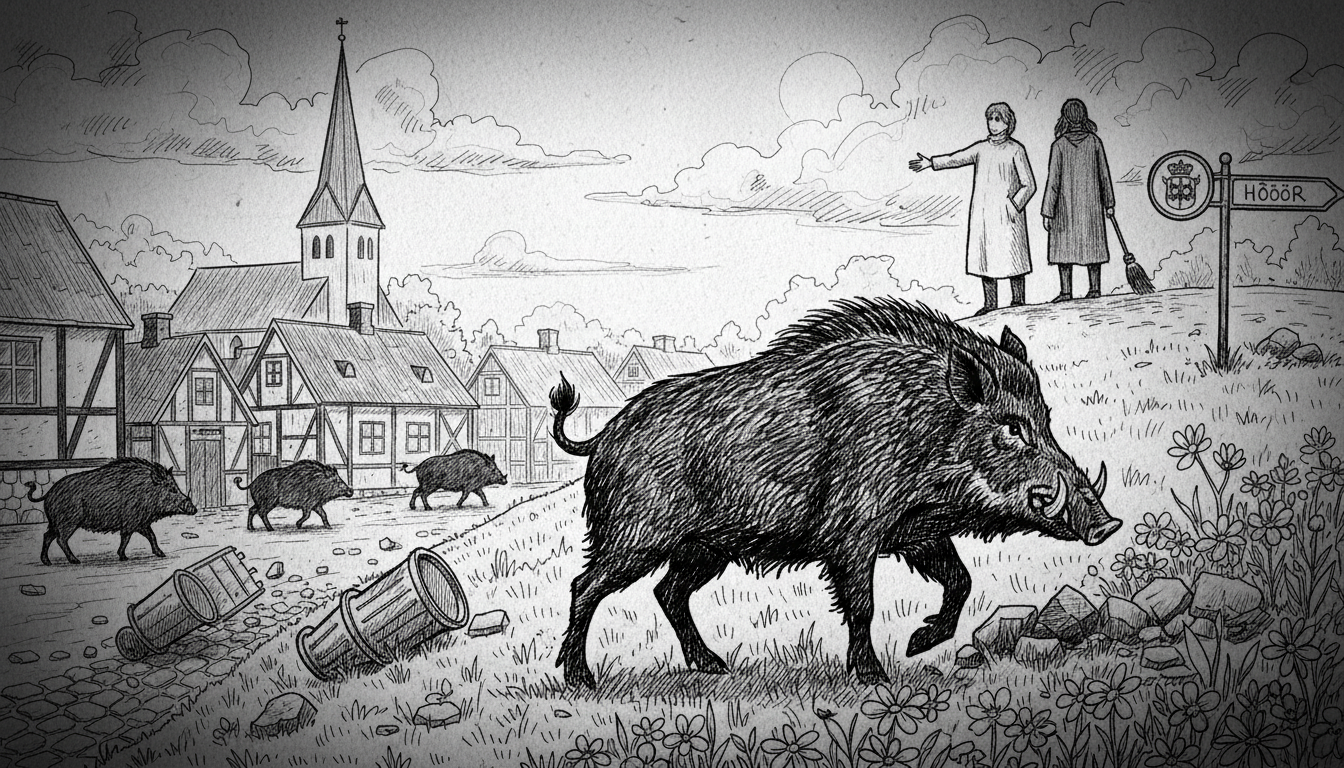Wild boars have been causing significant disruption in and around Höör for several weeks. The animals have been digging up lawns and disturbing residents throughout the area. Now they are moving closer to the town center, creating new concerns for local authorities and residents.
The boars primarily search for food on residential lawns, targeting acorns and roots. Their destructive behavior has left numerous properties damaged across the community. Local hunters were called in earlier this fall to address the growing problem, but the boars continue to cause property damage despite these efforts.
Rolf Carlsson, the municipal development chief in Höör, explained the challenges of managing the situation. Shooting within populated areas presents serious safety concerns, he noted in a statement. The darkness and proximity to homes, cars, and people make traditional control methods difficult to implement safely.
While wild boars are not uncommon in this region of southern Sweden, their current behavior marks a concerning shift. They have never before approached the town center in such numbers or caused this level of destruction, according to municipal officials. The scale of their presence and damage represents a new development in human-wildlife conflicts in the area.
Tom Espgård, a wildlife manager with the county administrative board, offered a different perspective on the situation. He expressed concern about growing public resentment toward the animals. Wild boars represent an ecological resource rather than just a problem, he emphasized in his comments. While they can cause some damage, they play an important role in the local ecosystem and provide high-quality meat.
This situation reflects broader challenges facing Swedish communities as urban and natural environments increasingly overlap. Climate changes and shifting food availability may be driving wildlife into closer contact with human settlements. The Höör case demonstrates how municipalities must balance public safety concerns with ecological considerations when managing wildlife populations.
Local authorities continue to monitor the situation and explore solutions that address both safety concerns and ecological values. The community faces the complex task of finding effective management strategies that protect property while respecting the animals' role in the local environment. Similar challenges have emerged in other Swedish municipalities where urban expansion meets traditional wildlife habitats.
Residents are advised to secure potential food sources and report boar sightings to local authorities. The situation requires ongoing attention as seasonal changes may affect animal behavior and movement patterns in the coming months.

